The world of dreams is a mysterious realm that often leaves us in awe and confusion. Just when we think we have woken up from a deep slumber, we find ourselves trapped in another layer of reality. This perplexing phenomenon, known as false awakening dreams, can be both captivating and disorienting. False awakening dreams occur when a person dreams of waking up, only to realize later that they are still in the midst of a dream. In this article, we will delve into the intricacies of false awakening dreams, exploring their characteristics, causes, types, and the impact they have on our waking life and sleep quality. We will also discuss techniques to induce such dreams, how to interpret them, and provide tips for dealing with this puzzling experience. So, fasten your seatbelts, and get ready to embark on a journey through the enigmatic world of false awakening dreams.
What are False Awakening Dreams?
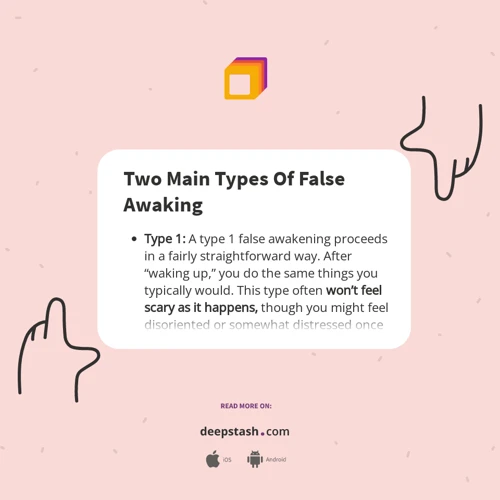
False awakening dreams are a perplexing phenomenon that occurs when a person dreams of waking up, only to realize later that they are still in the midst of a dream. It is a vivid and realistic experience that can be disorienting and confusing. During a false awakening dream, individuals often believe that they have successfully awoken from their slumber and begin to go about their usual morning routine, such as getting out of bed, brushing their teeth, or having breakfast. However, as the dream progresses, they may start to notice subtle discrepancies or strange occurrences that indicate they are still in a dream state. These can range from bizarre changes in the surroundings, encounters with familiar individuals who behave oddly, or even feeling trapped or paralyzed. False awakening dreams can be incredibly vivid and lifelike, making it challenging for individuals to distinguish between dream and reality. As a result, when they finally do wake up for real, there is a lingering sense of confusion and uncertainty. To further understand this mysterious phenomenon, it is important to explore its characteristics, causes, and the various types of false awakening dreams that people experience.
Characteristics of False Awakening Dreams
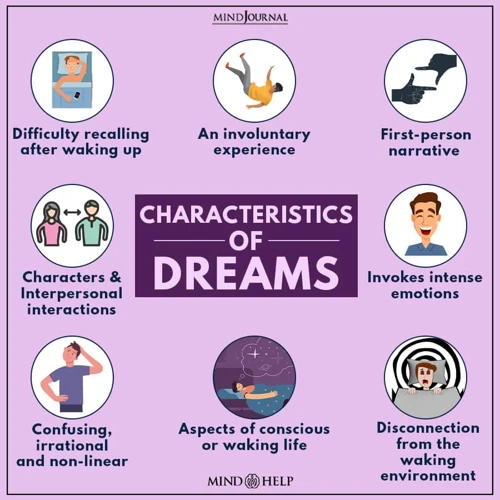
Characteristics of false awakening dreams can vary from person to person, but there are some common themes that often recur. One of the key characteristics is the intense feelings of realism and vividness that accompany these dreams. Everything in the dream, from the environment to the movements and interactions, feels incredibly lifelike. This can make it difficult for individuals to differentiate between the dream and reality, adding to the confusion and disorientation. Another characteristic is the seamless transition from a dream state to a waking state. In false awakening dreams, the dreamer believes they have woken up and starts performing their usual daily activities, such as getting out of bed, getting dressed, or preparing breakfast. These actions feel so natural that individuals may fully believe they are awake, only to discover moments later that they are still dreaming. Additionally, false awakening dreams often involve a sense of repetition. The dreamer may experience multiple instances of awakening, each time believing they are finally in reality, only to realize they are still trapped in a dream. This cycle of false awakenings can be disconcerting and leave individuals questioning their own perception of reality. It is important to note that the characteristics of false awakening dreams can overlap with other dream phenomena, such as lucid dreaming or sleep paralysis. Understanding the distinct features of false awakening dreams is crucial in differentiating them from other experiences and gaining insight into their unique nature.
Causes of False Awakening Dreams

The exact causes of false awakening dreams are still a subject of debate among researchers and experts in the field of sleep and dreaming. However, several theories have been proposed to explain this intriguing phenomenon. One possible cause is an interruption in the sleep cycle. When individuals experience disrupted or irregular sleep patterns, such as during periods of stress or jet lag, it can increase the likelihood of false awakening dreams. Another potential cause is a heightened state of awareness during sleep. In some cases, individuals who practice lucid dreaming, where they are aware that they are dreaming and can control certain aspects of their dreams, may be more prone to experiencing false awakening dreams. The overlap between lucid dreaming and false awakening dreams is an interesting area of study that warrants further exploration. Additionally, false awakening dreams can also be triggered by external stimuli or events that carry over into the dream state, such as the sound of an alarm clock or the anticipation of an important event. It is important to note that while the causes of false awakening dreams are not yet fully understood, they provide valuable insights into the complexities of the human mind and the enigmatic nature of our dream experiences. For more information on false awakening dreams and the mysteries surrounding them, you can check out this article.
Types of False Awakening Dreams

Types of False Awakening Dreams:
1. Iterative False Awakenings: In this type of false awakening dream, individuals experience a continuous cycle of waking up repeatedly within their dream. Each time they believe they have woken up, only to discover that they are still dreaming. This loop can occur multiple times, creating a sense of frustration and confusion.
2. Pre-Lucid False Awakenings: These dreams mimic the feeling of a false awakening, but with an added twist. In pre-lucid false awakenings, individuals may have a heightened sense of awareness, almost reaching a state of lucid dreaming where they are aware that they are dreaming. However, instead of fully realizing they are in a dream, they remain convinced that they have awakened, still unaware of the dream state.
3. Nightmarish False Awakenings: Nightmarish false awakening dreams involve unsettling and distressing events. Individuals may find themselves in terrifying situations that they believe they have awoken into, only to realize later that they are still trapped within the confines of a dream. These dreams can be characterized by feelings of fear, panic, and a desperate desire to escape.
4. Altered Reality False Awakenings: In this type of false awakening dream, individuals may experience subtle or dramatic changes in their surroundings that create an altered reality. This could include waking up in a different location, noticing unusual objects or furniture, or encountering people who behave in strange and unexpected ways.
5. Hyperrealistic False Awakenings: Hyperrealistic false awakening dreams are incredibly vivid and lifelike. Everything feels tangible, and individuals may have difficulty distinguishing between the dream world and reality. These dreams can be so convincing that upon waking up for real, individuals may still feel a lingering sense of doubt and confusion.
Understanding the different types of false awakening dreams can provide insight into the wide range of experiences that individuals may encounter within this phenomenon. Whether it’s the repetitive cycle of iterative false awakenings, the unsettling nature of nightmarish false awakenings, or the hyperrealism of these dreams, each type presents a unique perspective on the intricate intricacies of the dream world. To learn more about the differences between false awakening dreams and lucid dreaming, you can read our in-depth comparison article on /lucid-dreaming-vs-false-awakening-dreams-difference/. While false awakening dreams may not reflect reality, they offer a fascinating exploration of the complexities of the human mind and the boundless possibilities of the dream realm.
Common Themes in False Awakening Dreams
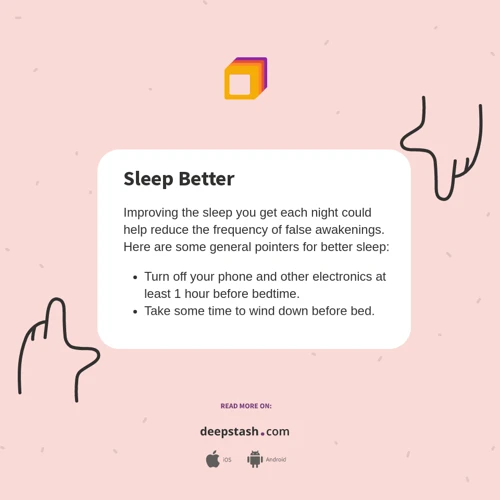
In the realm of false awakening dreams, there are several common themes that often emerge, further adding to the perplexity of these experiences. One common theme is the sensation of flying or floating, where individuals find themselves effortlessly soaring through the air or gliding above the ground. This dream element can evoke a sense of freedom and liberation, but also a feeling of wonder and confusion. Another recurring theme is the disruption of daily routine, where individuals may find themselves caught in a loop of repeating mundane tasks like waking up, getting ready for the day, and engaging in familiar activities, only to realize that they are trapped in a dream within a dream. Additionally, false awakening dreams often involve inexplicable changes in the surroundings, where the dream environment may shift, transform, or become distorted, creating a sense of disorientation and surrealism. Encounters with familiar individuals who behave strangely or out of character is another common theme, often heightening the sense of confusion and uncertainty. Lastly, feeling trapped or paralyzed is another prevalent theme, where individuals may struggle to move or escape from a particular situation, further blurring the lines between dream and reality. These common themes in false awakening dreams add to the enigmatic and mysterious nature of this phenomena. To gain a deeper understanding of the impact of false awakening dreams, it is essential to explore their psychological effects, how they affect sleep quality, and their influence on waking life.
Flying or Floating Sensations
One of the common themes experienced in false awakening dreams is the sensation of flying or floating. Individuals may find themselves effortlessly soaring through the skies or gliding above the ground, defying the laws of gravity. These sensations can be exhilarating and liberating, as the dreamers experience a sense of freedom and weightlessness. The feeling of flying or floating in a false awakening dream is often incredibly vivid and realistic, adding to the confusion between dream and reality. It’s as if the dreamer has temporarily gained the power to defy the constraints of the physical world. This phenomenon is often associated with lucid dreaming, where individuals become aware that they are dreaming and can exert a level of control over their dream environment. However, in the context of false awakening dreams, the flying or floating sensations typically occur before the individual realizes they are still within a dream. It’s important to note that these experiences are purely subjective and exist solely within the realm of dreams. While they may feel remarkably real in the moment, they do not have any physical manifestation in reality. Understanding the various themes and elements that can occur within false awakening dreams can help shed light on the intricacies of this fascinating phenomenon. For those interested in exploring the relationship between false awakening dreams and reality, you can check out this article.
Disrupted Daily Routine
One of the common themes in false awakening dreams is the experience of a disrupted daily routine. In these dreams, individuals believe they have woken up and proceed to engage in their regular activities. However, they may encounter unexpected disruptions or unusual events that deviate from their ordinary routine. For example, they might find themselves in a different location or encounter unfamiliar objects in their immediate surroundings, causing a sense of confusion and disorientation. These disruptions can manifest in various ways, such as discovering new rooms in their house, encountering strange people or objects in familiar places, or experiencing inexplicable changes in the weather or time of day. This disruption of the daily routine adds to the surreal and perplexing nature of false awakening dreams, blurring the line between reality and the dream world. It can leave individuals with a lingering feeling of uncertainty even after they wake up, questioning the boundaries of their waking and dreaming experiences.
Inexplicable Changes in the Surroundings
In false awakening dreams, one common theme that often occurs is the inexplicable changes in the surroundings. Individuals may notice subtle or drastic alterations in their environment that defy the laws of reality. For example, they might wake up in a completely different location, such as a strange room or unfamiliar place, despite falling asleep in their own bed. Objects in the room may also appear distorted, misplaced, or completely transformed. Furniture may change shape or color, walls may shift or disappear entirely, and even the layout of the entire space may be different from what is familiar to the dreamer. These unexpected changes can be disorienting and disconcerting, as individuals try to make sense of the surreal and ever-shifting environment around them. It is not uncommon for dreamers to experience a sense of unease or confusion when the reality they expect is constantly being altered. This aspect of false awakening dreams highlights the flexibility and malleability of the dream state, where the laws of physics and logic can be bent or broken. It serves as a captivating reminder of the limitless possibilities and creativity within the world of dreams.
Encounters with Familiar Individuals
Encounters with familiar individuals during false awakening dreams add another layer of intrigue to the experience. In these dreams, individuals may come across people they know in their waking life, such as friends, family members, or even celebrities. However, what makes these encounters perplexing is that these familiar individuals often behave in unusual or unexpected ways. They may have exaggerated personalities, possess extraordinary abilities, or engage in bizarre conversations. For example, a close friend might suddenly transform into a mythical creature, or a family member may speak in riddles. These encounters can evoke a sense of familiarity combined with a feeling of unease or surrealism. It is as if the dream world is playing with our perceptions, distorting the familiar to blur the lines between reality and fantasy. Exploring encounters with familiar individuals in false awakening dreams can shed light on the subconscious mind’s ability to create intricate and sometimes contradictory narratives that challenge our expectations and understanding of the waking world.
Feeling Trapped or Paralyzed
Feeling trapped or paralyzed is a common theme in false awakening dreams. In these dreams, individuals may find themselves unable to move or escape from their surroundings, leading to a sense of helplessness and frustration. This sensation can be incredibly vivid and realistic, adding to the overall confusion and disorientation. Some individuals report feeling as though an external force is holding them down or preventing them from moving, while others describe a sensation of being trapped in their own bodies. This feeling of paralysis can be associated with a sense of fear or anxiety, as individuals struggle to break free from their physical constraints. The experience of feeling trapped or paralyzed in a false awakening dream can be incredibly distressing, as it blurs the line between dream and reality. It is important to remember that these sensations are a product of the dream state and not reflective of actual physical limitations. Understanding the common theme of feeling trapped or paralyzed in false awakening dreams can help individuals better navigate and cope with these experiences.
Impact of False Awakening Dreams
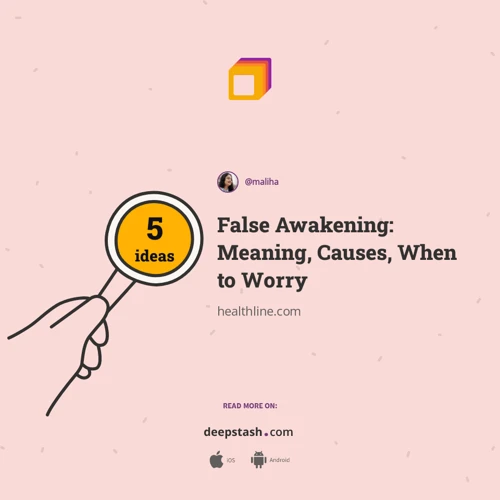
The impact of false awakening dreams extends beyond the realm of sleep. Not only do these dreams leave individuals feeling bewildered and questioning the boundaries of reality, but they can also have psychological effects. Experiencing multiple false awakening dreams can lead to feelings of confusion, disorientation, and a lack of trust in one’s own perceptions. Additionally, the occurrence of such dreams can disrupt the quality of sleep, causing fatigue and daytime drowsiness. False awakening dreams can also have an influence on waking life, blurring the lines between the dream world and reality. Individuals may find themselves questioning whether certain memories or experiences were part of a dream or actually happened. This phenomenon highlights the intricate connection between our dreams and waking life, reminding us of the powerful impact that dreams can have on our psychological well-being and overall perception of the world.
Psychological Effects
Psychological effects are a significant aspect of false awakening dreams, as they can have a profound impact on an individual’s mental state. Experiencing these dreams can evoke a range of emotions, including confusion, frustration, and even fear. The blurring of the line between dream and reality can leave individuals questioning their own perception and sense of control. This can lead to feelings of insecurity and a loss of trust in their own senses.
In some cases, false awakening dreams may also trigger intense feelings of anxiety or panic. The sudden realization that one is trapped in a dream while believing they are awake can be deeply unsettling. The inability to escape the dream or control the events unfolding can intensify these negative emotions. The psychological effects of false awakening dreams can be long-lasting, especially if an individual experiences these dreams frequently or if they coincide with other stressors in their life.
On the other hand, some individuals may find false awakening dreams fascinating and may view them as opportunities for exploration and self-reflection. Lucid dreamers, in particular, may see false awakening dreams as a chance to practice their dream control techniques and delve deeper into their subconscious mind. These individuals may experience a sense of empowerment and excitement within the dream state.
The psychological effects of false awakening dreams vary from person to person and can be influenced by individual beliefs, experiences, and mindset. It is important to explore these effects further to gain a comprehensive understanding of the impact these dreams can have on mental well-being.
How They Affect Sleep Quality
False awakening dreams can have a significant impact on sleep quality. When individuals experience these dreams, they may find themselves stuck in a cycle of repeatedly waking up in a dream, only to realize they are still asleep. This can lead to feelings of frustration, restlessness, and anxiety, preventing them from obtaining restful sleep. False awakening dreams can disrupt the normal sleep cycle and hinder the progression into deeper, more restorative stages of sleep. As a result, individuals may wake up feeling exhausted and unrefreshed, even after seemingly spending a sufficient amount of time in bed. The emotional intensity and vividness of these dreams can also contribute to increased arousal during sleep, making it difficult to fall back asleep quickly and maintain a stable sleep pattern. Additionally, the confusion and uncertainty caused by false awakening dreams can trigger heightened levels of stress and anxiety, further impacting sleep quality. It is essential to address and manage these dreams to improve sleep efficiency and overall well-being.
Influence on Waking Life
The influence of false awakening dreams on waking life can be profound and thought-provoking. These dreams often leave individuals questioning the nature of reality and their own perception. One impact of false awakening dreams is their psychological effects. They can create a sense of unease, confusion, or even anxiety as individuals struggle to differentiate between dream and waking states. The vividness and realism of these dreams can make it challenging to trust one’s own senses, leading to a heightened sense of skepticism and uncertainty. Additionally, false awakening dreams can disrupt sleep quality, causing individuals to feel restless and fatigued upon waking. The emotional intensity experienced during these dreams can carry over into waking life, influencing moods and overall well-being. The recurrent occurrence of false awakening dreams can have a lasting impact on an individual’s subconscious mind, potentially affecting their thoughts, beliefs, and behaviors. It may also trigger an increased interest in lucid dreaming and exploring the nature of consciousness. The influence of false awakening dreams extends beyond the confines of sleep, shaping the way we perceive reality and challenging our understanding of the mind’s capabilities.
Lucid Dreaming and False Awakening Dreams

Lucid dreaming and false awakening dreams are two closely related but distinct phenomena. While false awakening dreams involve dreaming of waking up within a dream, lucid dreaming refers to the state of being aware that one is dreaming while the dream is still occurring. In a lucid dream, individuals have a heightened sense of consciousness and can actively participate in and manipulate the dream narrative. While false awakening dreams can sometimes lead to lucid dreaming, not all false awakening dreams are lucid dreams.
In a false awakening dream, individuals may believe they have woken up but remain unaware that they are still within a dream. On the other hand, during a lucid dream, the dreamer is fully aware that they are dreaming and can actively engage with their dream environment. They can exert control over their actions, alter the dream scenario, or even choose to wake up if they desire.
A false awakening dream can sometimes serve as a trigger for lucidity, leading the dreamer to realize they are actually dreaming. This realization can be exciting for lucid dream enthusiasts who seize the opportunity to explore and interact with their dream world consciously. However, it is also possible to have a false awakening dream without achieving lucidity, wherein the dreamer remains unaware of the dream state.
While false awakening dreams involve dreaming of waking up within a dream, lucid dreaming refers to the state of being aware that one is dreaming while the dream is still unfolding. Lucid dreaming can occur independently or as a result of a false awakening dream, where the dreamer becomes aware of the dream state and gains control over their actions within the dream.
Techniques to Induce False Awakening Dreams
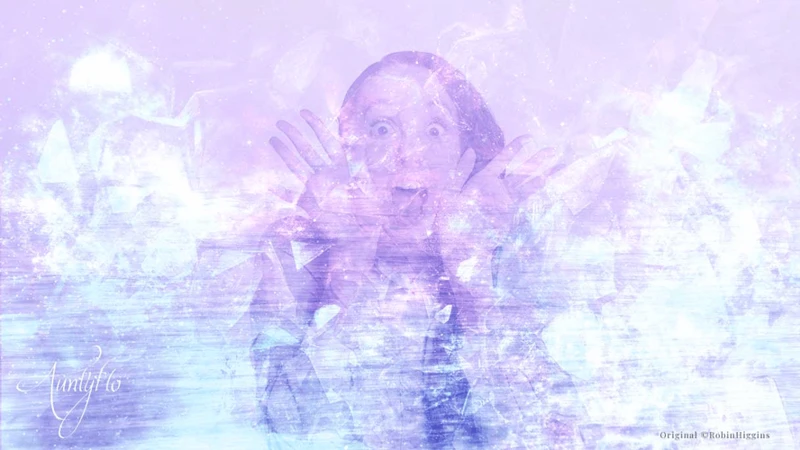
Techniques to induce false awakening dreams can be employed by individuals who are interested in exploring and experiencing this unique dreaming phenomenon. While it is not possible to control dreams entirely, there are certain practices that may increase the likelihood of having a false awakening dream. One technique is to maintain a dream journal and consistently record dreams upon waking up. This helps to improve dream recall and enhances self-awareness within dreams, increasing the chances of recognizing a false awakening. Another method involves performing reality checks throughout the day, where individuals question their surroundings and question whether they are in a dream or reality. By regularly practicing reality checks, this habit can carry over into dreams, leading to a greater likelihood of realizing one is in a false awakening dream. Additionally, setting intentions before bed, such as repeating the phrase “I will have a false awakening dream tonight,” may help to program the subconscious mind and plant the seed for experiencing this phenomenon. Employing these techniques requires patience and consistency, as it may take time for the desired outcome to manifest. It is also essential to remember that dreams can be unpredictable, and not every attempt to induce a false awakening dream will be successful. Nonetheless, by incorporating these practices into one’s routine, individuals can potentially increase their chances of encountering this intriguing dreaming experience.
How to Interpret False Awakening Dreams
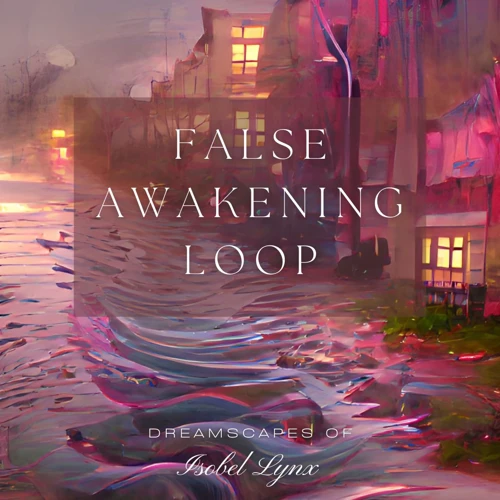
Interpreting false awakening dreams can provide valuable insight into our subconscious thoughts, emotions, and desires. These dreams often contain symbolic elements that can be analyzed to gain a deeper understanding of our inner selves. One approach to interpreting false awakening dreams is to pay attention to the emotions experienced during the dream. Strong feelings of confusion, frustration, or fear may suggest underlying anxieties or unresolved issues in waking life. Another aspect to consider is the symbolism present in the dream. Objects, people, or actions within the dream can represent different aspects of our lives. Keeping a dream journal can be helpful in identifying recurring symbols or themes that appear in multiple false awakening dreams. Additionally, reflecting on the experiences and events that occur in the dream can provide clues about what aspects of our lives may need attention or exploration. Consulting with a professional dream analyst or therapist who specializes in dream interpretation can also offer valuable guidance and insights. By delving into the meaning behind our false awakening dreams, we can gain a greater understanding of ourselves and potentially uncover important messages from our subconscious mind.
Comparison to Other Dream Phenomena

When comparing false awakening dreams to other dream phenomena, it becomes clear that each holds its own unique characteristics. One common comparison is between false awakening dreams and lucid dreaming, as both involve a heightened sense of awareness during the dream state. However, the main distinction lies in the level of control the dreamer has. In lucid dreams, individuals are aware that they are dreaming and can actively participate and manipulate the dream scenario. In contrast, false awakening dreams often trick the dreamer into believing they are awake, limiting their ability to exert conscious control over the dream environment. Another dream phenomenon often compared to false awakening dreams is sleep paralysis, which is characterized by a temporary inability to move or speak upon waking up. While false awakening dreams can sometimes include a feeling of being trapped or paralyzed, sleep paralysis occurs during the transition between sleep and wakefulness and is generally not associated with the false perception of waking up. False awakening dreams can also be distinguished from nightmares, which are typically characterized by intense fear, anxiety, and a sense of danger. While nightmares tend to evoke strong negative emotions, false awakening dreams may elicit confusion and disorientation instead. Understanding the differences between these various dream phenomena can help individuals recognize and categorize their own dream experiences more accurately.
Tips for Dealing with False Awakening Dreams
Dealing with false awakening dreams can be challenging, but there are several tips and strategies that can help individuals navigate through these perplexing experiences.
1. Reality Checks: Incorporate reality checks into your daily routine to help distinguish between dreams and reality. Some common reality checks include looking at the time or a digital clock, trying to read a passage of text, or pinching yourself to check for pain.
2. Dream Journal: Keep a dream journal by your bedside and make it a habit to record your dreams as soon as you wake up. This can help you identify patterns, recurring themes, or symbols in your false awakening dreams, providing valuable insights for interpretation.
3. Lucid Dreaming Techniques: Practicing lucid dreaming techniques can increase your awareness during dreams and potentially help you realize when you are in a false awakening. Techniques such as reality testing, meditation, and visualization can enhance your ability to recognize when you are in a dream state.
4. Reality Anchors: Place physical objects or reminders in your environment that can act as anchors to distinguish between dreams and reality. For example, place a unique item on your bedside table or create a specific daily routine that you can use as a reference point.
5. Seek Support: Connect with others who have experienced false awakening dreams or join online forums and communities where you can share your experiences and seek guidance from individuals who have successfully dealt with these dreams.
6. Manage Stress: High levels of stress and anxiety can contribute to increased frequency and intensity of false awakening dreams. Practice stress management techniques such as exercise, mindfulness, or relaxation techniques to reduce the likelihood of experiencing these dreams.
Remember, dealing with false awakening dreams requires patience and persistence. By implementing these strategies and maintaining a curious and open mindset, you can better navigate through these puzzling experiences and gain a deeper understanding of your dreams.
Conclusion
In conclusion, false awakening dreams are a fascinating and perplexing phenomenon that can leave individuals questioning the nature of their reality. These dreams mimic the experience of waking up, only for the dreamer to realize they are still in a dream state. The characteristics of false awakening dreams, such as the realistic surroundings and the ability to engage in daily activities, can make it challenging to differentiate between the dream world and reality. The causes of these dreams are not fully understood, but they are thought to be related to sleep patterns, stress, and other psychological factors. There are various types of false awakening dreams, each with its own unique features and themes. While these dreams can be disorienting and even frightening, they also offer opportunities for exploration and self-reflection. Techniques such as reality checks and lucid dreaming can be employed to navigate false awakening dreams and gain a sense of control within the dream world. Ultimately, false awakening dreams remind us of the complex and mysterious nature of the human mind and the depths of our dream experiences. As we continue to explore and understand this phenomenon, we gain further insights into the workings of our subconscious minds and the intricacies of the dream realm.
Frequently Asked Questions
1. Can false awakening dreams be recurring?
Yes, false awakening dreams can occur on multiple occasions. Some individuals may experience them sporadically, while others may have recurring episodes of false awakening dreams.
2. Are false awakening dreams the same as lucid dreaming?
No, false awakening dreams and lucid dreaming are distinct phenomena. While both involve dreams, false awakening dreams specifically involve the illusion of waking up and experiencing everyday activities within the dream, whereas lucid dreaming refers to a state of awareness and control within a dream.
3. Are false awakening dreams related to sleep disorders?
False awakening dreams are not typically considered a sleep disorder on their own. However, they can be associated with other sleep conditions such as sleep paralysis or sleep apnea.
4. Can false awakening dreams occur during daytime naps?
Yes, false awakening dreams can occur both during nighttime sleep and daytime naps. They are not restricted to a specific sleep period.
5. Are false awakening dreams more common in certain age groups?
False awakening dreams can occur in individuals of all age groups. However, they may be more prevalent in individuals who actively engage in dream journaling or lucid dream practices.
6. Do false awakening dreams have any cultural significance?
False awakening dreams have been explored across different cultures and belief systems. Some cultures interpret them as a sign of spiritual awakening or a metaphorical representation of the blurring boundaries between dreams and reality.
7. Can false awakening dreams be influenced by external factors?
Yes, external factors such as stress, anxiety, medication, or changes in sleep patterns can influence the occurrence of false awakening dreams.
8. Are false awakening dreams only visual or do other senses come into play?
False awakening dreams can involve not only visual experiences but also other sensory perceptions, such as auditory or tactile sensations, making them feel incredibly realistic.
9. Can false awakening dreams be controlled or manipulated?
While it may be challenging to actively control or manipulate false awakening dreams, practicing techniques for lucid dreaming, such as reality checks and dream journaling, may increase the likelihood of becoming aware of the dream state.
10. Do false awakening dreams have any long-term effects?
False awakening dreams themselves do not typically have long-term effects. However, recurring false awakening dreams or related sleep disturbances may impact overall sleep quality and well-being over time.








